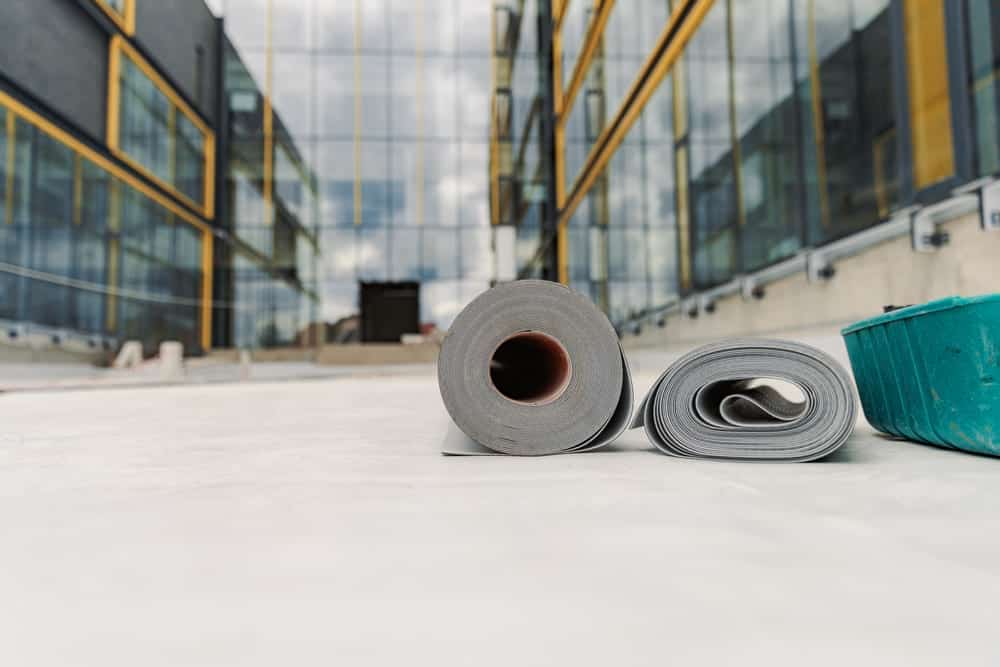The most common types of roof coating systems are acrylic, polyurethane foam, and silicone. Today, we will focus on two elastomeric roof coating systems: silicone coatings vs acrylic roof coatings.
Roof coatings are installed on existing roofs. They have four primary purposes: (1) protecting roof membranes from ultraviolet degradation and weathering, (2) enhancing a roof system’s fire resistance, (3) providing a watertight layer on an existing roof, and (4) enhancing the reflectivity of the roof surface.
Contents
Acrylic Roof Coatings
Acrylic roof coatings are elastomeric coatings. They are used to cover a variety of roofing systems, including the following:
- sloped metal roofs
- modified bitumen
- EPDM
- built-up roofs
- TPO
- PVC
- concrete
- spray polyurethane foam
Benefits of acrylic coatings
Acrylic coatings are cost-effective solutions.
They are UV resistant and reflective. They are typically white and can reduce heat transfer in buildings, lowering energy costs in areas with hot summers.
Acrylics are also easy to clean up and are environmentally friendly.
Drawbacks of acrylic coatings
Acrylics do not hold up well to standing water.
These systems are also prone to losing thickness as they age.
Acrylic coatings need to be installed when temperatures are at 50°F or higher. Otherwise, the system might not adhere to the surface properly.
Silicone Roof Coatings
Like acrylic coatings, silicone coatings can be used on a variety of commercial roofing substrates, including:
- sloped metal roofs
- modified bitumen
- EPDM
- built-up roofs
- TPO
- PVC
- concrete
Benefits of silicone roof coatings
Silicone coatings offer superior UV stability.
Unlike acrylic roof coatings, silicone systems are resistant to ponding water.
Silicone coatings are also less susceptible to breaking down due to colder temperatures.
Drawbacks of silicone coatings
Silicone coatings are challenging to spray and can clog the spraying system.
In addition, they accumulate dirt, which reduces the material’s ability to reflect UV rays.
In addition, silicone coatings are slippery when wet.
Which Roof Coating is Better for Commercial Roofs?
Silicone systems are generally considered a better elastomeric coating than acrylic coating systems because they can withstand ponding water and cold temperatures.
However, acrylic coating systems are used for sloped metal roofs or when roof appearance is a priority. Acrylic coating systems also tend to be less expensive than silicone. Acrylic systems are also preferable if there is a lot of foot traffic on the roofing system.
Talk with the Commercial Roofing Experts at AAA Roofing
Which elastomeric coating system is suitable for your commercial building? Building owners and property managers can learn more about coating systems by contacting one of the leading commercial roofing contractors in the Western US – AAA Roofing.
AAA Roofing has installed over 150 million square feet of roof surface since its formation in 1989. Come to us with your roofing goals, such as extending your roof life, lowering your energy bills, or reducing surface leaks – and we will help you select the best roof coating system for your situation.
Key Takeaways About Elastomeric Roof Coating Systems
- Both acrylic and silicone roof coating systems can be applied to most roof systems.
- Acrylic systems are cost-effective, environmentally friendly, and easy to keep clean. They also have excellent reflectivity properties.
- Silicone systems are resistant to standing water and cold temperature. These systems offer excellent durability – especially in areas prone to heavy rain or snow.
- A commercial roofing contractor familiar with your unique needs can help you select the correct type of coating for your roof membrane.





